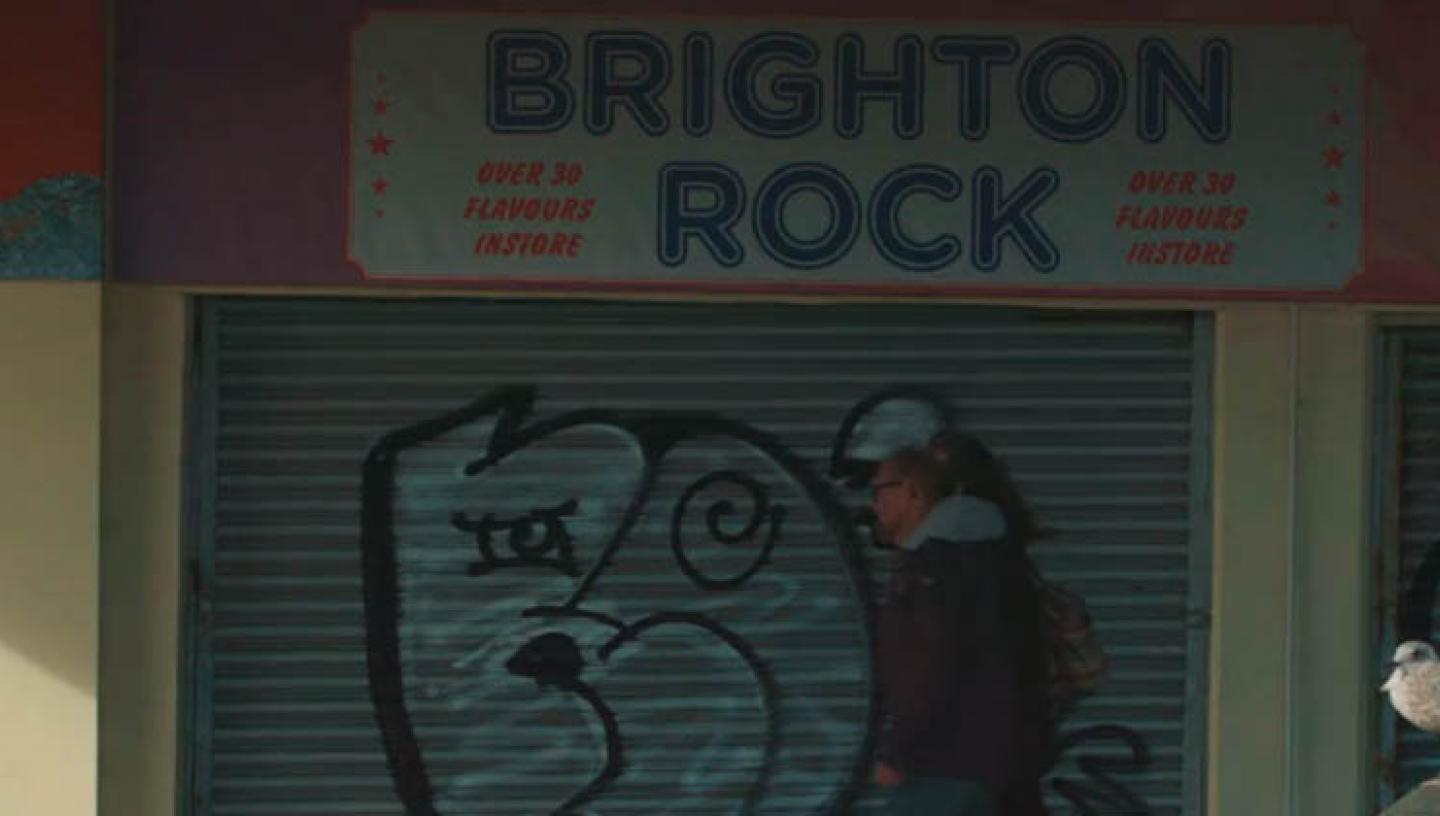
Funny inflatables. Sandcastles and ice lollies. We usually associate the seaside with a place of fun and childhood nostalgia. But beneath the bright exterior lies a grimy underside of gang fighting and industrial decay. From Banksy to Dracula, discover how pop culture has explored the darker regions of British seaside life.
By Arwa Haider
1. Brighton Rock (dir John Boulting, 1948)
The opening sequence of this first film adaptation of Graham Greene’s 1938 novel seems anxious not to taint the image of this “large, jolly friendly seaside town in Sussex”, stating that instead it recalls “another Brighton of dark alleyways and festering slums… the poison of crime and violence and gang warfare… now happily no more”. Still, it’s hard to shake the presence of its central teenage thug Pinkie, played here by a young Richard Attenborough.
2. Dracula by Bram Stoker (1897)
The pretty coastal town of Whitby, Yorkshire is the landing ground for Transylvanian Count Dracula, in Bram Stoker’s Victorian vampire novel. As Dracula’s ship approaches, the book reports that “the lately glassy sea was like a roaring and devouring monster”. Modern attractions in Whitby include an aptly dressed bi-annual Goth Weekend (est. 1994).

3. Wish you were here (1987)
Emily Lloyd gives a vivacious yet vulnerable portrayal of a rebellious teenage girl in a staid post-war English seaside town. The film (shot around the Sussex coast) is loosely based on the youth of British brothel madam Cynthia Payne, and it won international accolades; this US trailer is a peculiar fit for its distinctly dark moods:
4. 'Every day is like Sunday' by Morrissey (1988)
Long before he sagged into charmless decline, Morrissey was in his indie prime, and his second solo single was an evocative lament about “the coastal town/ That they forgot to close down… Come, Armageddon, come!” The accompanying video, shot in Southend-on-sea, starred Lucette Henderson as a moody teen heroine and British actress Billie Whitelaw (with a fleeting glimpse of Moz on the beach).
5. Why I never became a dancer by Tracey Emin (1995)
Margate’s most famous export reveals the tale of her own wayward youth around the “Golden Mile” in this short art film. The dark themes of ennui and misogyny ultimately give way to the defiant liberation of the final scene, where Emin whirls to a hi-NRG disco anthem by Sylvester.
6. Bhaji on the Beach (dir Gurinder Chadha, 1992)
Gurinder Chadha’s debut feature film is scripted by Meera Syal, and depicts a group of British Asian taking a daytrip to Blackpool. There is brilliant comedy in its seaside escapism, but also a confrontation of much heavier issues, including domestic violence and racism. The soundtrack features a splendid Bollywood-style cover of Summer Holiday, and the cast includes the late great Zohra Sehgal as a conservative matriarch, and Jimmi Harkishin (aka Dev from Coronation Street!).
7. Dirty Weekend (dir Michael Winner, 1993)
Helen Zahavi’s 1991 feminist revenge novel was adapted for this Brighton-set murky comedy/thriller, where meek Bella (Lia Williams) deals unflinching payback to a series of abusive men. The BBFC originally banned the film’s video release, due to its schlocky violent scenes.
8. It Couldn't Happen Here (dir Jack Bond, 1987)
Synth pop icons the Pet Shop Boys starred in this ill-fated movie project, a kind of nightmarish road trip through British culture. Shot in Clacton-on-sea, it features choreography by Arlene Phillips, guest stars including Carry On actress Barbara Windsor, and a lush soundtrack of PSB classics (which compensate for the awfully stilted plot).

9. Fruit Machine (dir Philip Saville, 1988)
Two young gay runaways flee gangland violence, and are swept up in Brighton’s subcultures. The gritty thriller is leavened with light touches, including a dance competition scene in a drag bar, hosted by Robbie Coltrane’s grande dame “Annabel”, and soundtracked by Man 2 Man Meets Man Parrish’s Male Stripper.
10. Quadrophenia (dir Franc Roddam, 1979)
Based on The Who’s 1973 rock opera album, Quadrophenia transforms the Brighton seafront into a bank holiday battleground between mods and rockers. Rival tribes rave and riot near Palace Pier; generations clash; and young mod Jimmy (Phil Daniels) dreams of breaking free from his humdrum reality.

11. Waste Man by Antony Gormley (2006)
Gormley’s towering figure (constructed out of around 30 tonnes of refuse materials, with the help of local community volunteers) was built in the grounds of Margate’s then-derelict Dreamland theme park, and publicly torched for Penny Woolcock’s art film, Margate Exodus. Gormley described his work as “a sign of those who had been dispossessed or refused a place, standing up defiantly to be recognised.”
12. Dismaland by Banksy (2015)
Enigmatic street art legend Banksy transformed a derelict lido in Weston-super-Mare into a dystopian “bemusement park” over five weeks. Visitors would encounter surly staff and queasy satires on death, decay and violence. The dark side of the seaside might actually be its salvation, though; tourism bosses reported that Dismaland brought £20million into the town.
Arwa Haider is a journalist and writer specialising in culture and music. Her work has appeared in a variety of publications and sites, from BBC Culture to The Financial Times, The Face, and contemporary art magazine Elephant, where she is Music Editor.
The Great British Seaside: Photography From The 1960s To The Present runs from March 23 to September 30 at the National Maritime Museum. Buy tickets